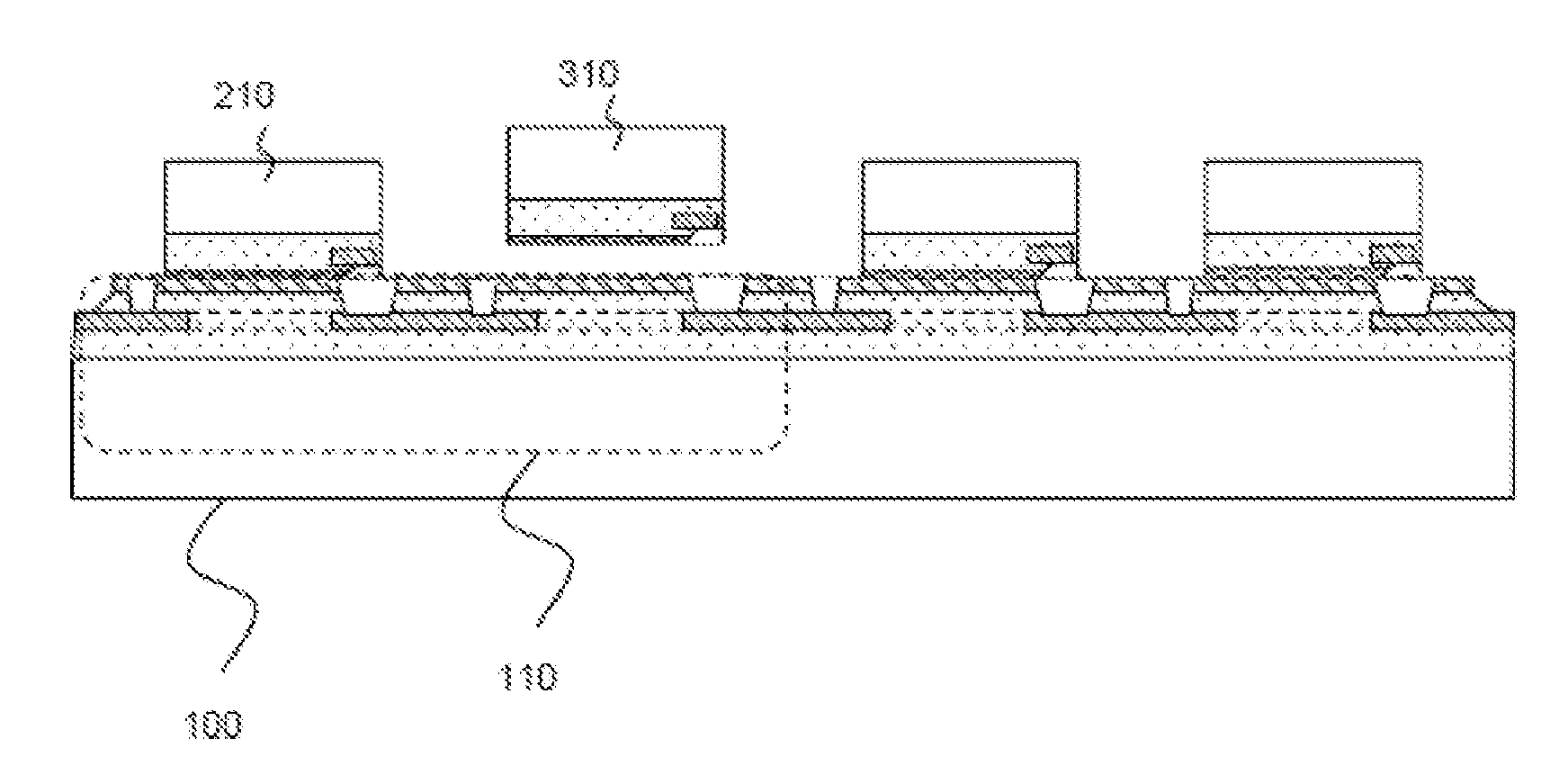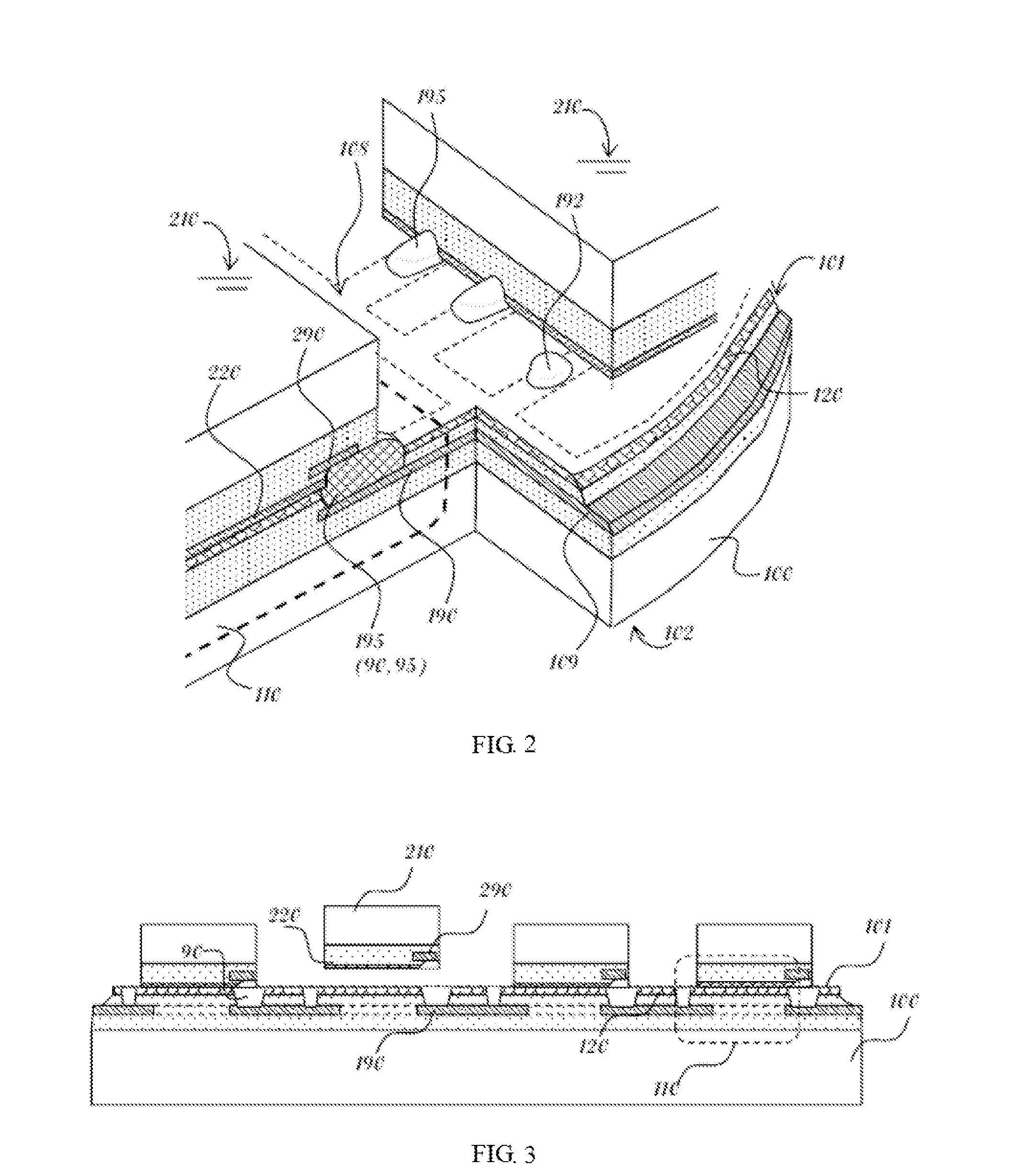Methods of Fabrication and Testing of Three-Dimensional Stacked Integrated Circuit System-In-Package
a technology of integrated circuit system and three-dimensional stack, which is applied in the direction of individual semiconductor device testing, semiconductor/solid-state device testing/measurement, instruments, etc., can solve the problems of high manufacturing cost, difficult process yield and cost, etc., and achieve low cost and high integration
- Summary
- Abstract
- Description
- Claims
- Application Information
AI Technical Summary
Benefits of technology
Problems solved by technology
Method used
Image
Examples
embodiment 1
[0031]Referring to FIG. 1, in this embodiment, a method of fabricating a 3D stacked IC SiP includes the steps described in detail below.
[0032]In step S101, as shown in FIGS. 2 and 3, a first semiconductor wafer 100 is provided, on which a plurality of first dies 110 are formed. The top surfaces of the plurality of first dies 110 are located in the same plane as a top surface of the first semiconductor wafer 100. Each first die 110 is provided with a first wire bond pad 190 formed in a peripheral part of the specific first die with at least a portion of the surface of the first wire bond pad 190 exposed in the air. A first dielectric layer 120 is formed over each first die 110 and covers the rest part of the surface of the specific first die 110 other than the exposed portion of the surface of the first wire bond pad 190. Specifically, in this embodiment, the first semiconductor wafer 100 is implemented as a silicon semiconductor substrate, and the first dielectric layer 120 is a cur...
embodiment 2
[0043]A method according to this embodiment has some steps that are the same as those of the method of Embodiment 1 and are thus not further described herein, except that step S103 of the method of this embodiment includes:
[0044]step S1031: arranging the individual second dies 210 at positions corresponding to the respective first dies 110, with the second dielectric layers 220 of the second dies 210 all located in the same plane, and injection molding a second wafer 200 by filling an injection molding material 209 among the second dies, as shown in FIGS. 2 and 8, and exposing portions of the second wire bond pads 290 by etching away the injection molding material 209 thereon, as shown in FIG. 9;
[0045]step S1032: vertically aligning the second wafer 200 with the first semiconductor wafer 100 such that each second die 210 on the second wafer 200 faces a corresponding one of the first dies 110 on the first semiconductor wafer 100, and bonding the second dielectric layer 220 on each se...
embodiment 3
[0050]A method according to this embodiment has some steps that are the same as those of the methods of the previous embodiments and are thus not further described herein, but there are some differences as described below.
[0051]In this embodiment, referring to FIG. 2, all the first wire bond pads 190 in the first dies 110 are electrically connected. Specifically, in this embodiment, an interconnection in the form of a conductive grid 109 including a conductive lead frame 108 is formed on the top surface of the first semiconductor wafer 100 and electrically connected with all the first wire bond pads 190 in the first dies 110, with the conductive lead frame 108 covering the periphery of the first semiconductor wafer.
[0052]In a chip fabrication process, a metal layer may be first deposited and etched to form desired interconnecting metal wires. Part of a dielectric layer formed over the surfaces of the dies may then be etched away to expose input / output terminals of the interconnectin...
PUM
 Login to View More
Login to View More Abstract
Description
Claims
Application Information
 Login to View More
Login to View More - R&D
- Intellectual Property
- Life Sciences
- Materials
- Tech Scout
- Unparalleled Data Quality
- Higher Quality Content
- 60% Fewer Hallucinations
Browse by: Latest US Patents, China's latest patents, Technical Efficacy Thesaurus, Application Domain, Technology Topic, Popular Technical Reports.
© 2025 PatSnap. All rights reserved.Legal|Privacy policy|Modern Slavery Act Transparency Statement|Sitemap|About US| Contact US: help@patsnap.com



